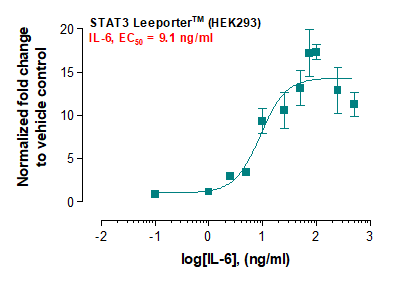Recombinant Human Ubiquitin-Conjugating Enzyme E2 I/UBE2I (N-GST)
Shipping Info:
For estimated delivery dates, please contact us at [email protected]
| Amount : | 50 µg |
| Content : | Supplied as a 0.2 µm filtered solution of 50mM HEPES, 150mM NaCl, pH 7.5. |
| Storage condition : | Store at -20°C, stable for 6 months after receipt. Please minimize freeze-thaw cycles. |
| AA sequence : | MSPILGYWKIKGLVQPTRLLLEYLEEKYEEHLYERDEGDKWRNKKFELGLEFPNLPYYIDGDVKLTQSMAIIRYIADKHNMLGGCPKERAEISMLEGAVLDIRYGVSRIAYSKDFETLKVDFLSKLPEMLKMFEDRLCHKTYLNGDHVTHPDFMLYDALDVVLYMDPMCLDAFPKLVCFKKRIEAIPQIDKYLKSSKYIAWPLQGWQATFGGGDHPPKSDLVPRGSHMSGIALSRLAQERKAWRKDHPFGFVAVPTKNPDGTMNLMNWECAIPGKKGTPWEGGLFKLRMLFKDDYPSSPPKCKFEPPLFHPNVYPSGTVCLSILEEDKDWRPAITIKQILLGIQELLNEPNIQDPAQAEAYTIYCQNRVEYEKRVRAQAKKFAPS |
Source: E. coli.
MW :44.4kD.
Recombinant Human Ubiquitin-Conjugating Enzyme E2 I is produced by our E.coli expression system and the target gene encoding Met1-Ser158 is expressed with a GST tag at the N-terminus. SUMO-Conjugating Enzyme UBC9 (UBC9) belongs to the ubiquitin-conjugating enzyme family. UBC9 is homologous to ubiquitin-conjugating enzymes (E2s). However, instead of conjugating ubiquitin, UBC9 conjugates a ubiquitin homologue, Small Ubiquitin-Like Modifier 1 (SUMO-1). The conjugation of ubiquitin requires the activities of ubiquitin-activating (E1) and conjugating (E2) enzymes. It is suggested that UBC9 might play a role in DNA repair and perhaps even in aging.
MW :44.4kD.
Recombinant Human Ubiquitin-Conjugating Enzyme E2 I is produced by our E.coli expression system and the target gene encoding Met1-Ser158 is expressed with a GST tag at the N-terminus. SUMO-Conjugating Enzyme UBC9 (UBC9) belongs to the ubiquitin-conjugating enzyme family. UBC9 is homologous to ubiquitin-conjugating enzymes (E2s). However, instead of conjugating ubiquitin, UBC9 conjugates a ubiquitin homologue, Small Ubiquitin-Like Modifier 1 (SUMO-1). The conjugation of ubiquitin requires the activities of ubiquitin-activating (E1) and conjugating (E2) enzymes. It is suggested that UBC9 might play a role in DNA repair and perhaps even in aging.
Endotoxin : Less than 0.1 ng/µg (1 IEU/µg) as determined by LAL test.
For Research Use Only. Not for use in diagnostic/therapeutics procedures.
| Subcellular location: | Nucleus, Cytoplasm |
| Post transnational modification: | Phosphorylation at Ser-71 significantly enhances SUMOylation activity. |
| Tissue Specificity: | Expressed in heart, skeletal muscle, pancreas, kidney, liver, lung, placenta and brain. Also expressed in testis and thymus. |
| BioGrid: | 113177. 460 interactions. |
|
There are currently no product reviews
|














.png)












